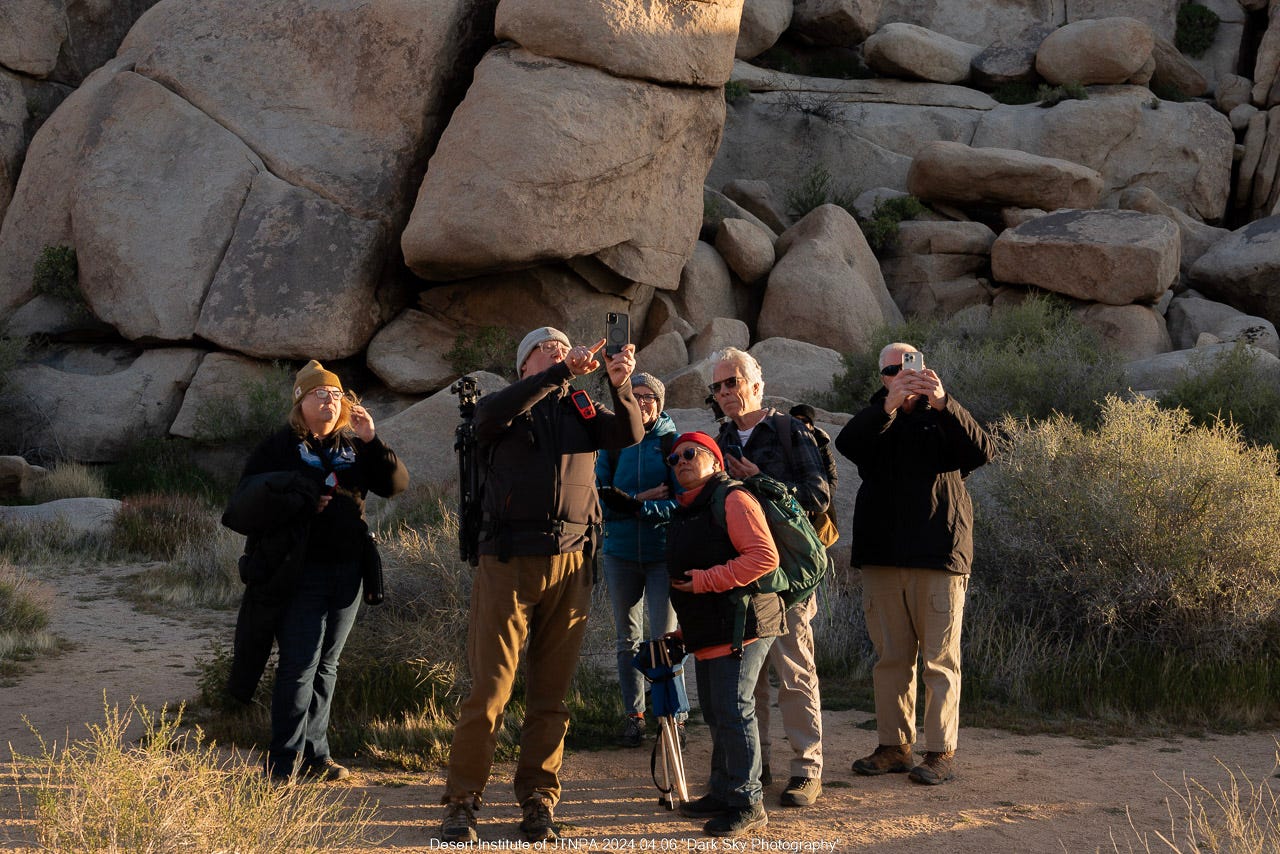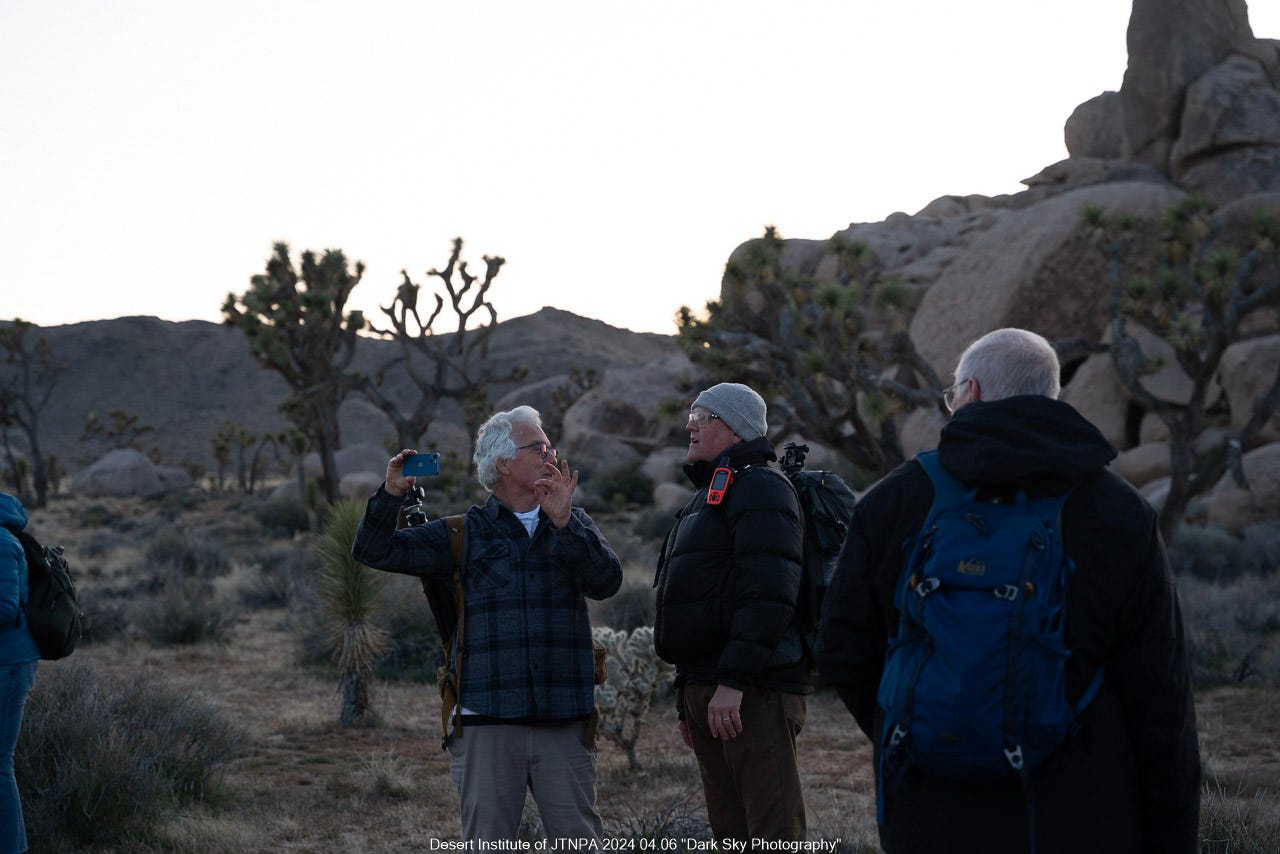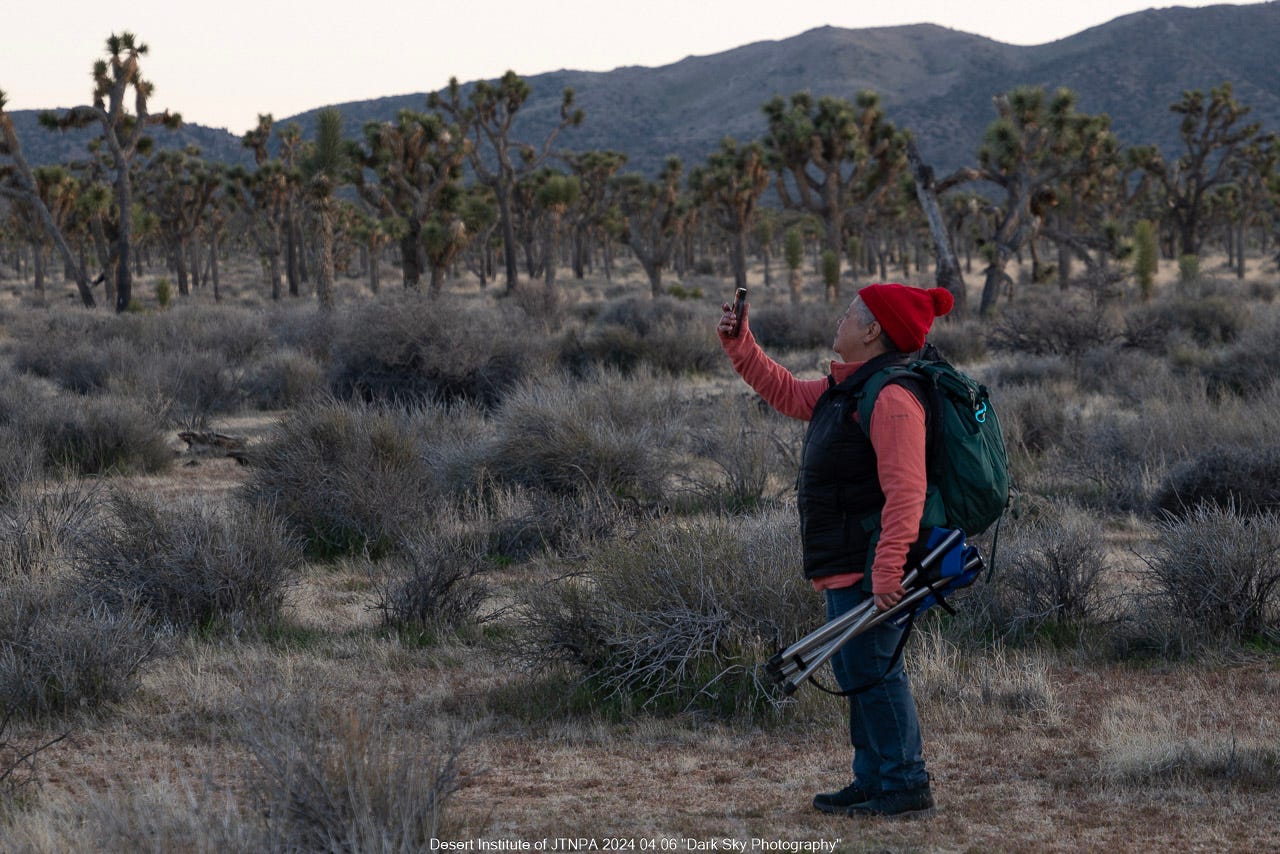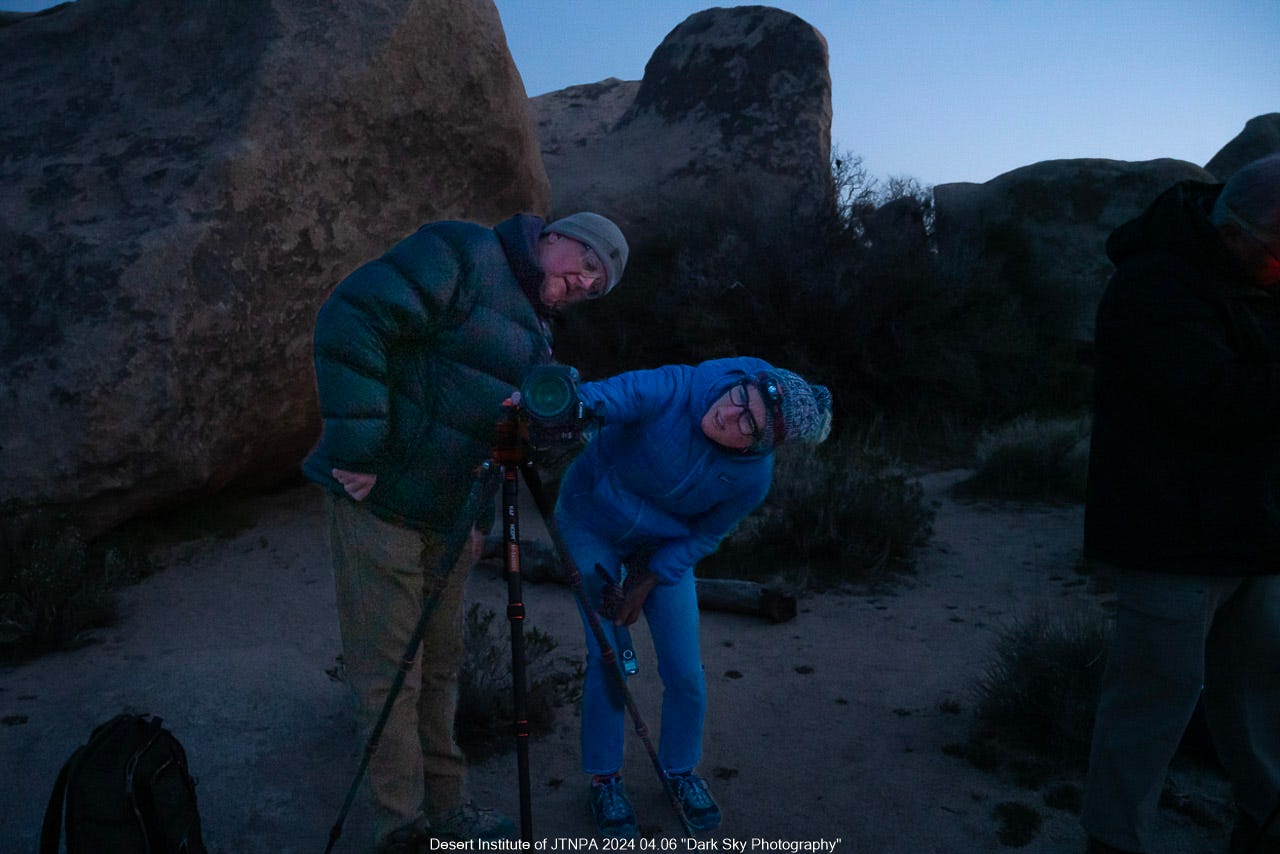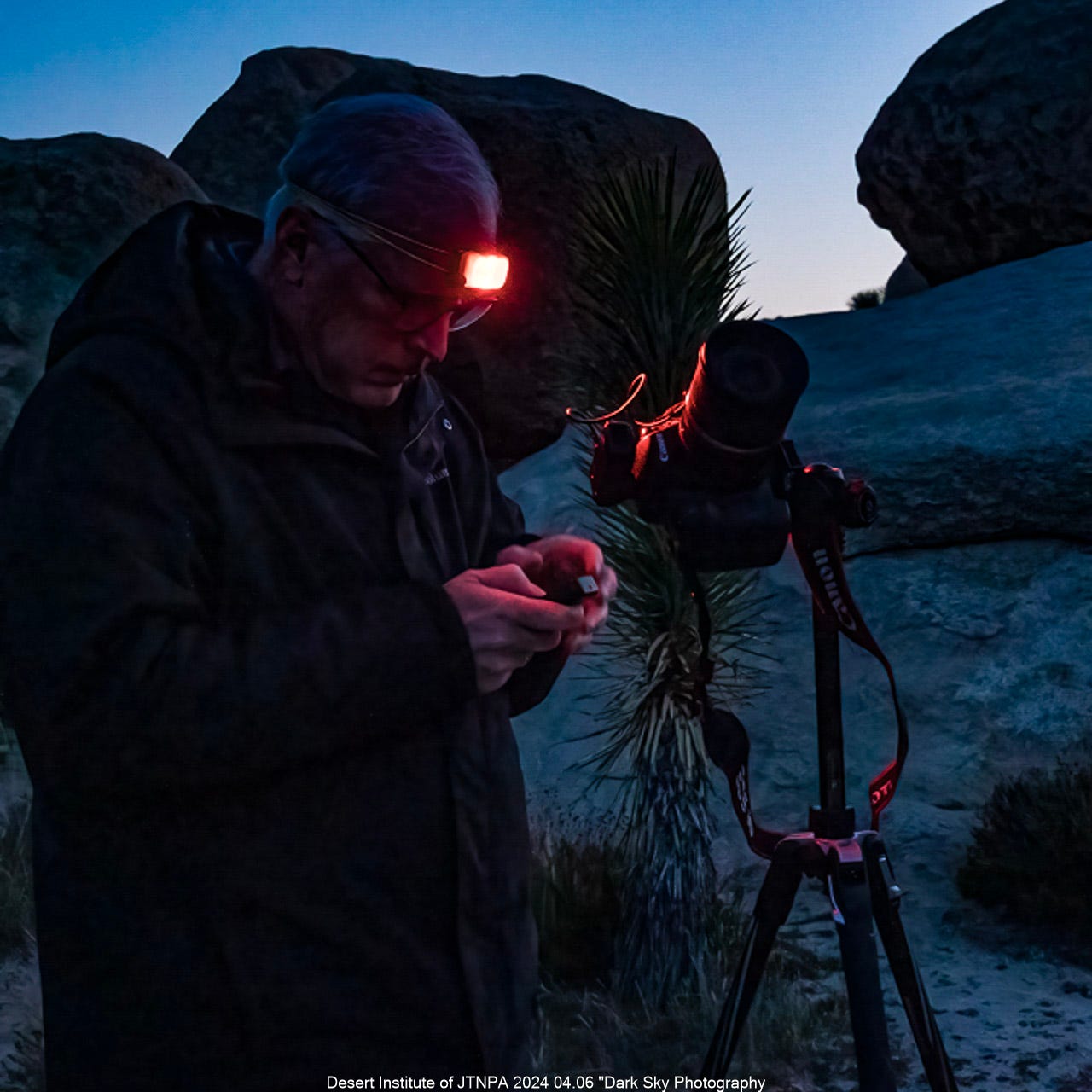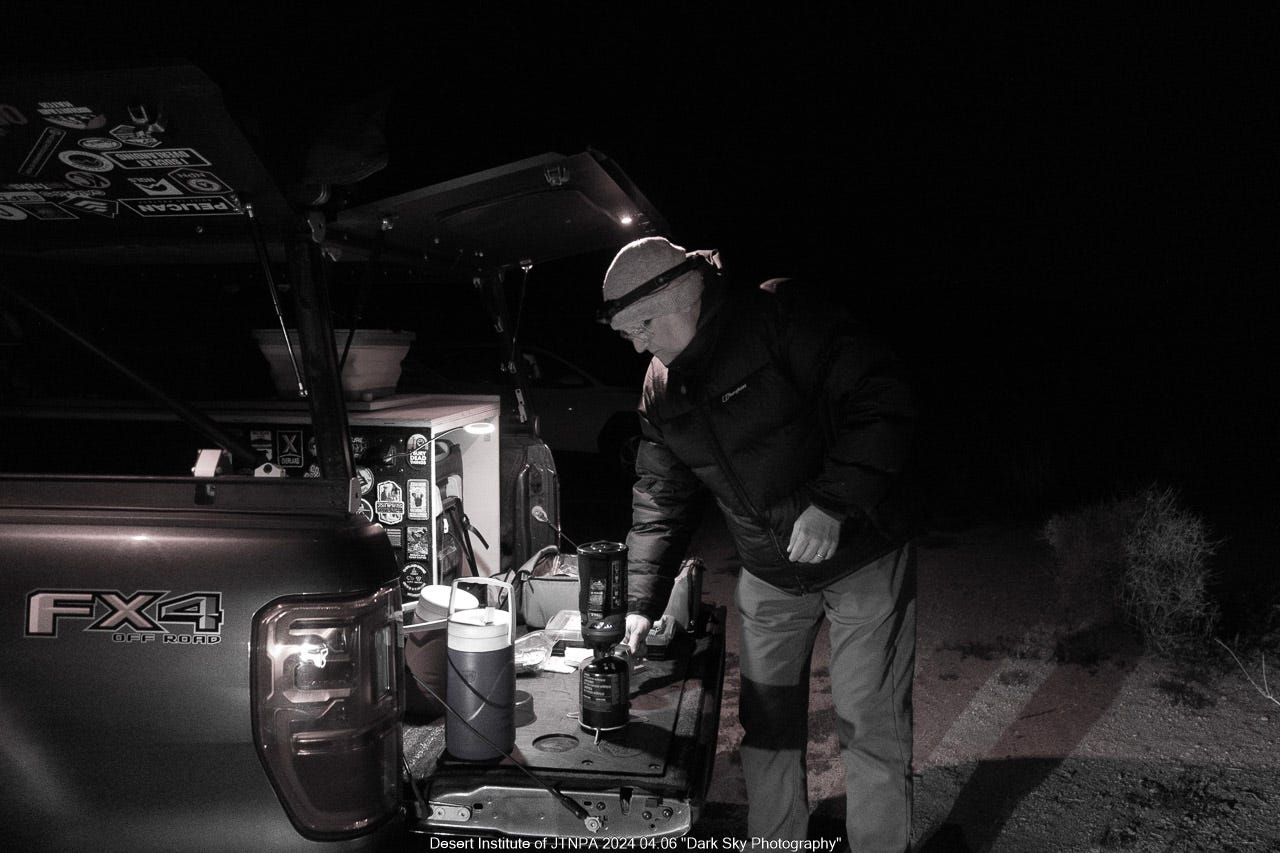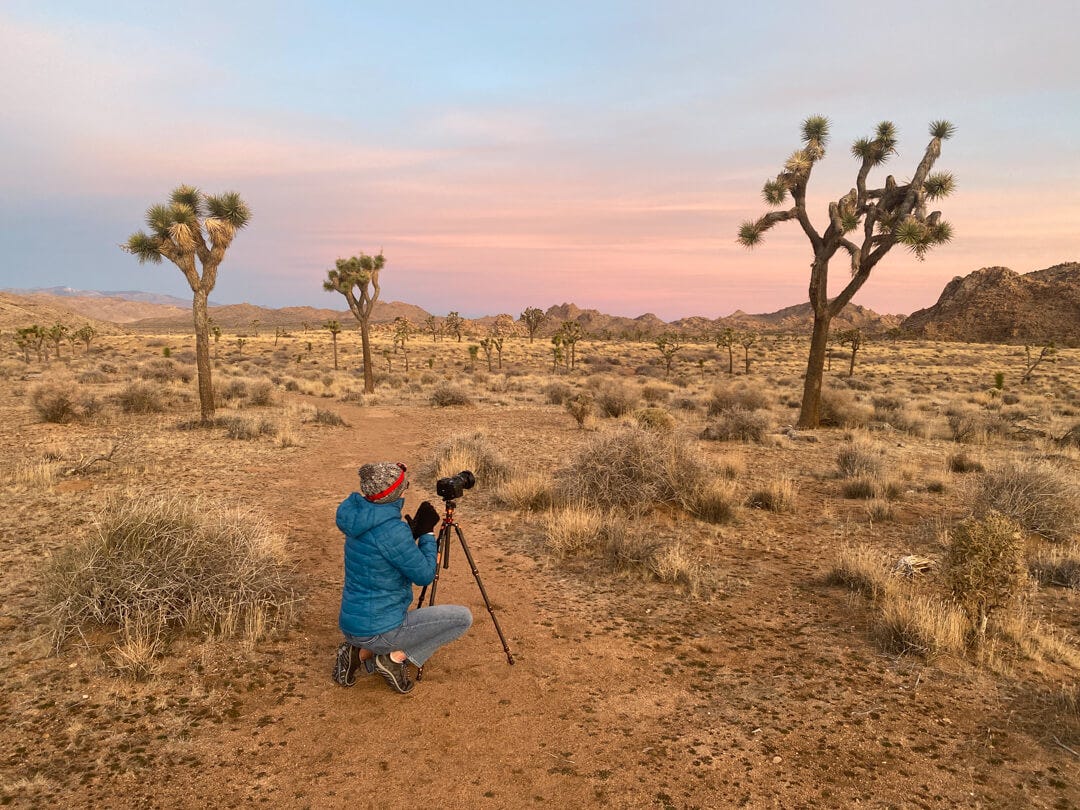Welcoming the Milky Way
Explore Landscapes #26: Starting off the 2024 Milky Way season by leading a Dark Sky Workshop for JTNPA Desert Institute.
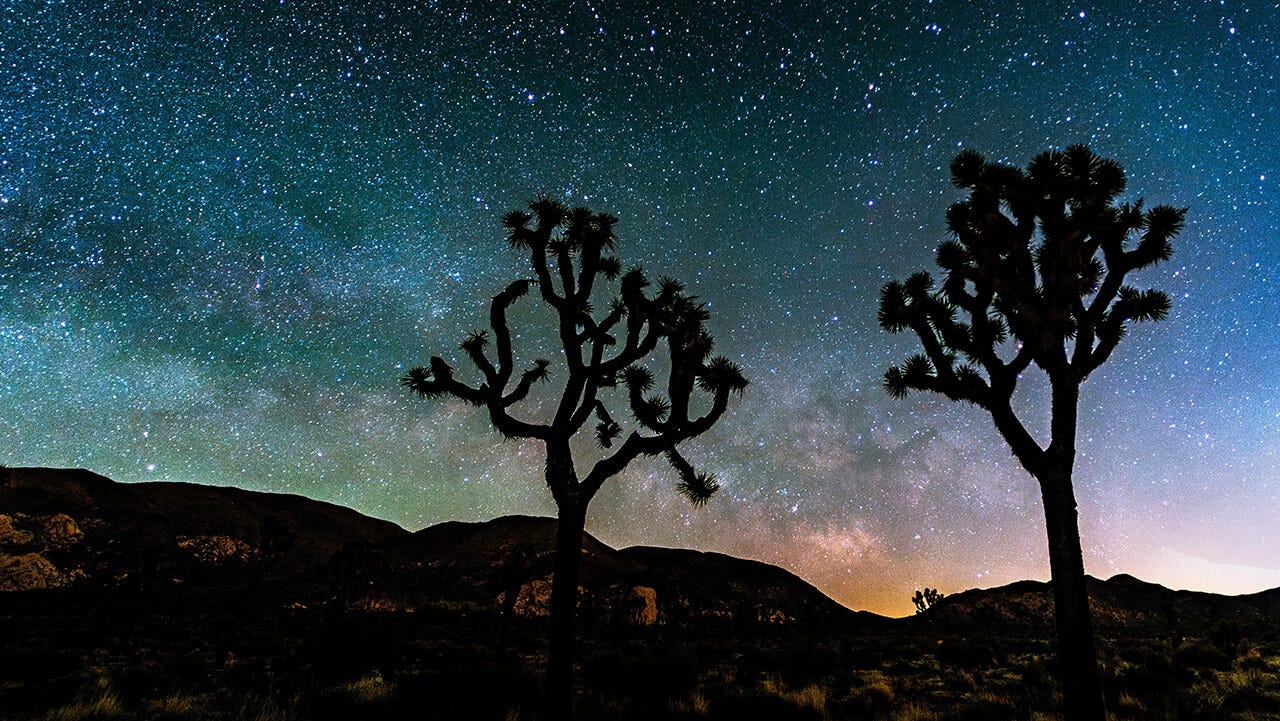
One part of the year that I always look forward to is the start of Milky Way season - and with it my Dark Sky Photography workshops. Here in the Northern Hemisphere, the season is typically from April to October, when it’s possible to view the galactic center (the brightest part of the Milky Way) above the horizon.
If you’d like to see (or photograph) the Milky Way you’ll need two things. Firstly, a dark sky - so head to somewhere that’s recognized as a dark sky location. Joshua Tree National Park is recognized as an International Dark Sky Park by the International Dark-Sky Association (IDA). Secondly, plan your trip around a new moon. On the new moon is best, because the sky is dark for the whole night, however, about four days either side of the new moon will work as well, as the moon will have set before the galactic center becomes visible above the horizon.
My 2024 Milky Way season kicked off with leading a Joshua Tree National Park Association (JTNPA) dark sky workshop. Joining me on the workshop were Michael, Joan, Paul, Regina, Ondine, and Deanie. I was also very pleased to have the help of Desert Institute volunteer (and friend) Chris Andersen.
NOTE: If you’d like to join a JTNPA Dark Sky Workshop there’s still a few places left on Saturday May 11th, and Saturday June 1st. Click on the relevant link to learn more and book your place.
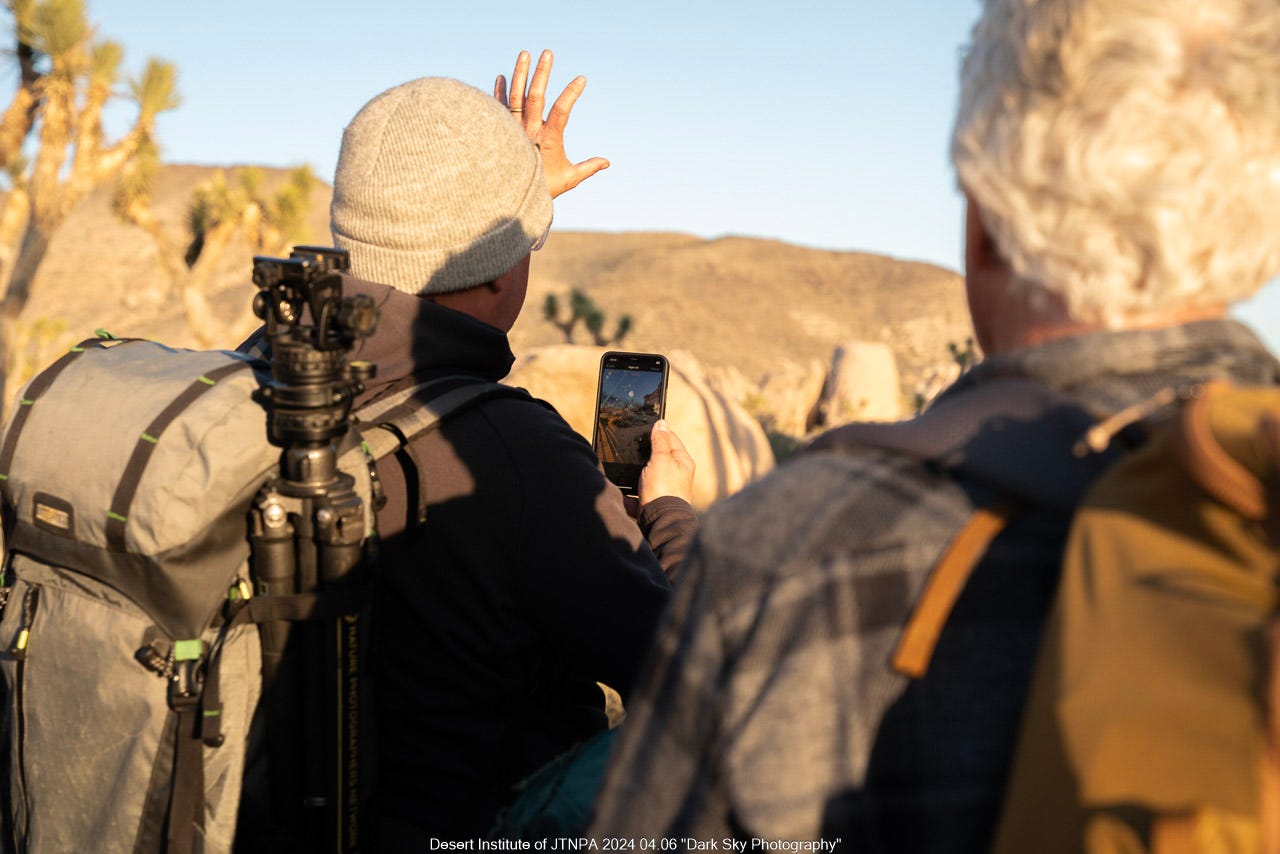
An important aspect when shooting the dark sky - whether you’re trying to capture star trails or the Milky Way, is to plan your composition before dark. I like to arrive on site at least an hour before sunset so as to give myself time to scout a new location.
An invaluable aid to planning dark sky photography locations and compositions is the Night-AR (augmented reality) feature within the app, PhotoPills. This allows you to view the scene in front of you using your camera and what you see is the night sky features (Milky Way, and Star Trails) superimposed on that camera view.
Once we have our locations and compositions planned it’s then time to get down to the nitty gritty of setting up tripods, cameras, intervalometers etc. This sounds easy, however, it takes some time to get used to doing this in the dark.
Fortunately there’s plenty of time to get the camera equipment setup between sunset and the end of astronomical twilight - when it’s at last nighttime and you can start to photograph the stars. We were shooting on April 6th, so night time started at just before 9pm - and we were able to shoot two different star trail sequences - and take a break for a hot drink - before the Milky Way put in an appearance above the horizon at 1:45am.
Once the camera gear was all setup then it was time to start shooting some test images so that camera settings could be adjusted and optimized for the specific composition each photographer was shooting - and for the camera that they were using.
It was a cold April night (dipping down to about 30° F) so in between shooting star trails and the Milky Way arriving, we had a comfort break with hot drinks and a dose of heated car seats before venturing out again.
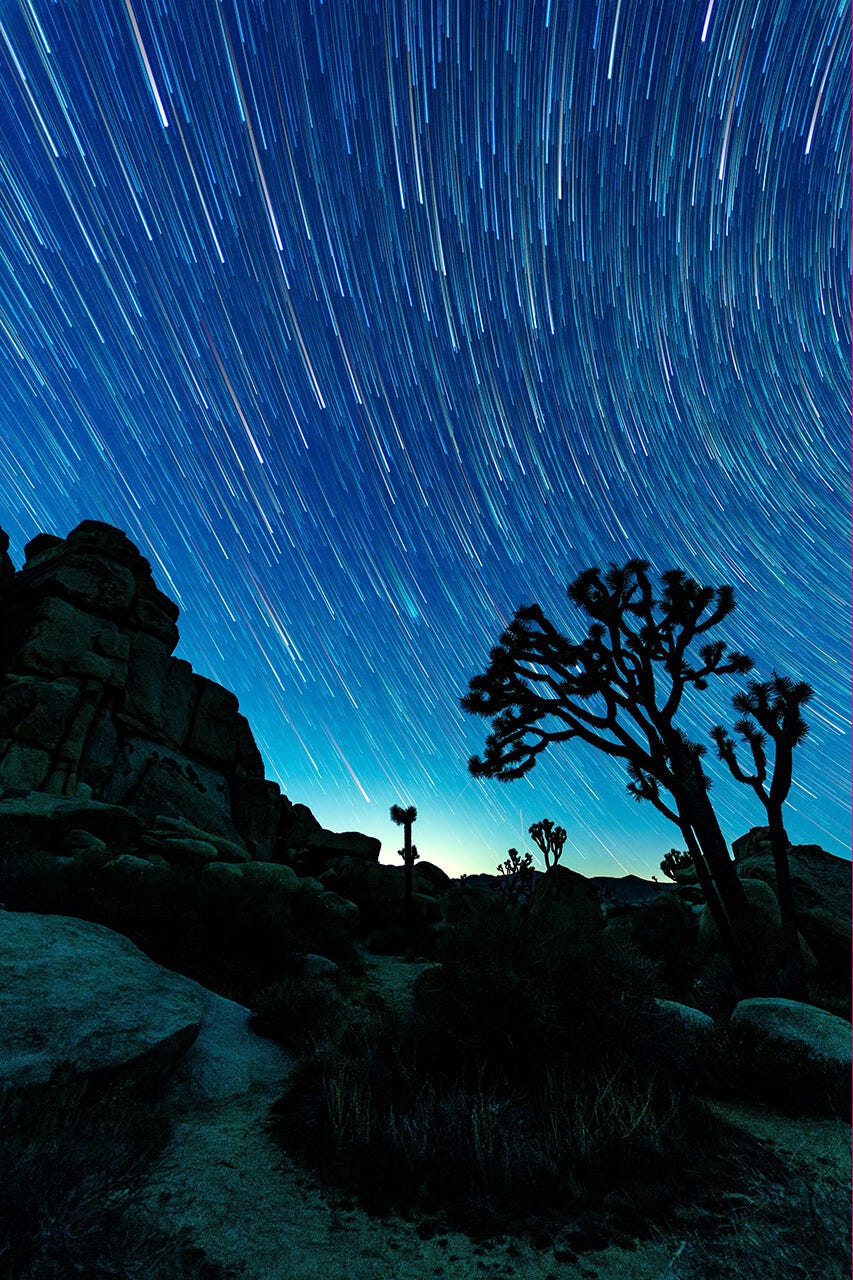
Thanks to everyone who attended the workshop for making it so much fun. Special thanks to Ondine for agreeing to let me share their images from the workshop, and to Chris for volunteering to support the workshop.
Interesting musings and images from others:
industrial #40 by perfectlight
More Wildflowers and Online Guide Updates by Lee Petersen
The path of totality by Andy Adams
The Gift of Creative Mistakes by Ibarionex - The Candid Frame
Beyond the grand landscape by Gill Moon Photography
What to write about when you've run out of ideas by Molly Ella
The meaning of Yookamurra by Ross Duncan gets curious
Read this next if you want to learn how to plan and shoot star trails:
Let me be your landscape photography guide to Joshua Tree National Park in 2024 - and beyond. Workshop calendar now updated for 2025 season.
My workshops cater to all levels of photographers and include classic viewpoints as well as some hidden gems. I'll make sure you're in the best place to take advantage of the light and weather conditions.
Choose a one-to-one workshop (and personalize it to what you'd like to photograph, specific techniques, or how far you want to hike), or join a small group workshop (which is limited to no more than 3 photographers).
I will help you discover new places and improve your photography at the same time.




